PAINTING, 1930 Mainie Jellett (1897-1944)
Signature: signed and dated lower right; with small hand-written label on reverse; with Irish Art Exhibition [Brussels] label inscribed with artist's name, address [36 Fitzwilliam Sq., Dublin] and title; with Corporation of Dublin exhibition label on reverse; also w Medium: oil on canvas Dimensions: 30 by 36in., 75 by 90cm. Provenance: Mr & Mrs James Creed Meredith K.C., LL.D. (1875-1942);Thence by descent to the present owner Exhibited: Irish Art Exhibition, Brussels, May 1930;'Mainie Jellett Retrospective Exhibition', Hugh Lane Gallery Dublin, July - October 1962, catalogue no. 3; Handwritten label verso reads: 34. / oil / 30 x 36 / A054 / Painting Brussels / Ref Abstract.In 1921 the young Irish artists Mainie Jellett and Evie Hone arrived in Paris to study with the Cubis... st master André Lhote Jellett and Hone had studied in London under Walter Sickert where they absorbed important lessons in anatomy and classical portraiture, but this wasn't enough, they wanted to be 'modern' and in the early 1920s the terms 'Modern' and 'Cubist' were synonymous. Lhote was one of the first generation of Cubists, having shown in the second public exhibition of Cubism at the Salon des Indépendents of 1912. Following the Armistice in late 1918, cultural activity was renewed in Paris and Lhote opened an academy where a significant number of Irish artists were taught to paint along cubist principles. From work produced by Jellett at this time, we know that working from the nude model, seated portraits, and still-lifes were central to the curriculum. For Jellett and Hone this was too similar to the training they had received in London, so in 1922 they famously asked to be taken on as students by the painter Albert Gleizes who had neither an academy nor an open studio. Gleizes had been developing a form of Cubist abstraction more in tune with Mondrian than Picasso and in 1920 published 'Du Cubisme et les moyens de le comprendre'(1), arguing that Cubism had been a search for a precise scientific method to replace the old scientific method of single point perspective, and that the essential elements of this new method are now known" .(2)Working together, the artists developed a system of 'translation and rotation' the early result of which, Jellett's Painting, 1923(National GalIery of Ireland) was shown at the Dublin Painters Gallery that year to critical derision. Although on first glance Painting, 1923is abstract, closer inspection of the format, composition, medium, and patterning relate it directly to early Renaissance religions icons like Cimabue's Maestà(c.1280). This was not co-incidental. Although much of the modern movement was fiercely secular, Gleizes, Jellett and Hone maintained a deeply Christian faith and sought to integrate Christian imagery into their modern vision. Through the mid-20s they worked on a series of 'Elements' paintings - largely abstract exercises in colour and form. In 1927-28 Jellett produced her major work Homage to Fra Angelico a cubist interpretation of Angelico's Coronation of the Virgin(c.1435, Louvre, Paris). This is a mature work in Jellett's oeuvre demonstrating the successful cubist reduction of a form with traditional religious content, something we also see in the present work Painting,1930. An unusual feature of Homage to Fra Angelicoand Painting, 1930is the colour palette. In the case of Homagethe colours range from mustard-green through to taupe and similarly Painting, 1930utilises ochres and umbers reminiscent of brick burned by the sun. It is likely that the 'L'Exposition des Arts Décoratifs' in Paris in 1925 may have influenced this. This major exhibition of Art Deco included pavilions from around the Francophone world such as the colonies Tunisia, Morocco and Algeria and so the colours and light of North Africa would have permeated the visual plane. The source of the vertical, tripartite composition of Painting, 1930can be compared to a typical quattrocento painting like Perugino's Madonna and
PAINTING, 1930 Mainie Jellett (1897-1944)
Signature: signed and dated lower right; with small hand-written label on reverse; with Irish Art Exhibition [Brussels] label inscribed with artist's name, address [36 Fitzwilliam Sq., Dublin] and title; with Corporation of Dublin exhibition label on reverse; also w Medium: oil on canvas Dimensions: 30 by 36in., 75 by 90cm. Provenance: Mr & Mrs James Creed Meredith K.C., LL.D. (1875-1942);Thence by descent to the present owner Exhibited: Irish Art Exhibition, Brussels, May 1930;'Mainie Jellett Retrospective Exhibition', Hugh Lane Gallery Dublin, July - October 1962, catalogue no. 3; Handwritten label verso reads: 34. / oil / 30 x 36 / A054 / Painting Brussels / Ref Abstract.In 1921 the young Irish artists Mainie Jellett and Evie Hone arrived in Paris to study with the Cubis... st master André Lhote Jellett and Hone had studied in London under Walter Sickert where they absorbed important lessons in anatomy and classical portraiture, but this wasn't enough, they wanted to be 'modern' and in the early 1920s the terms 'Modern' and 'Cubist' were synonymous. Lhote was one of the first generation of Cubists, having shown in the second public exhibition of Cubism at the Salon des Indépendents of 1912. Following the Armistice in late 1918, cultural activity was renewed in Paris and Lhote opened an academy where a significant number of Irish artists were taught to paint along cubist principles. From work produced by Jellett at this time, we know that working from the nude model, seated portraits, and still-lifes were central to the curriculum. For Jellett and Hone this was too similar to the training they had received in London, so in 1922 they famously asked to be taken on as students by the painter Albert Gleizes who had neither an academy nor an open studio. Gleizes had been developing a form of Cubist abstraction more in tune with Mondrian than Picasso and in 1920 published 'Du Cubisme et les moyens de le comprendre'(1), arguing that Cubism had been a search for a precise scientific method to replace the old scientific method of single point perspective, and that the essential elements of this new method are now known" .(2)Working together, the artists developed a system of 'translation and rotation' the early result of which, Jellett's Painting, 1923(National GalIery of Ireland) was shown at the Dublin Painters Gallery that year to critical derision. Although on first glance Painting, 1923is abstract, closer inspection of the format, composition, medium, and patterning relate it directly to early Renaissance religions icons like Cimabue's Maestà(c.1280). This was not co-incidental. Although much of the modern movement was fiercely secular, Gleizes, Jellett and Hone maintained a deeply Christian faith and sought to integrate Christian imagery into their modern vision. Through the mid-20s they worked on a series of 'Elements' paintings - largely abstract exercises in colour and form. In 1927-28 Jellett produced her major work Homage to Fra Angelico a cubist interpretation of Angelico's Coronation of the Virgin(c.1435, Louvre, Paris). This is a mature work in Jellett's oeuvre demonstrating the successful cubist reduction of a form with traditional religious content, something we also see in the present work Painting,1930. An unusual feature of Homage to Fra Angelicoand Painting, 1930is the colour palette. In the case of Homagethe colours range from mustard-green through to taupe and similarly Painting, 1930utilises ochres and umbers reminiscent of brick burned by the sun. It is likely that the 'L'Exposition des Arts Décoratifs' in Paris in 1925 may have influenced this. This major exhibition of Art Deco included pavilions from around the Francophone world such as the colonies Tunisia, Morocco and Algeria and so the colours and light of North Africa would have permeated the visual plane. The source of the vertical, tripartite composition of Painting, 1930can be compared to a typical quattrocento painting like Perugino's Madonna and
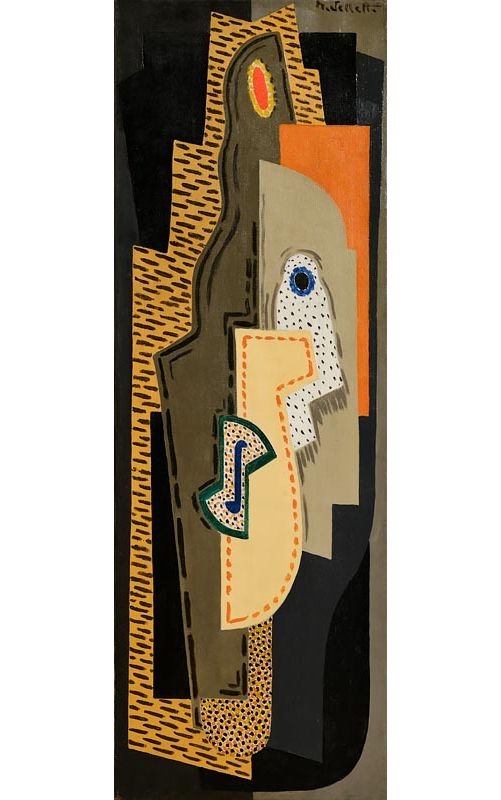
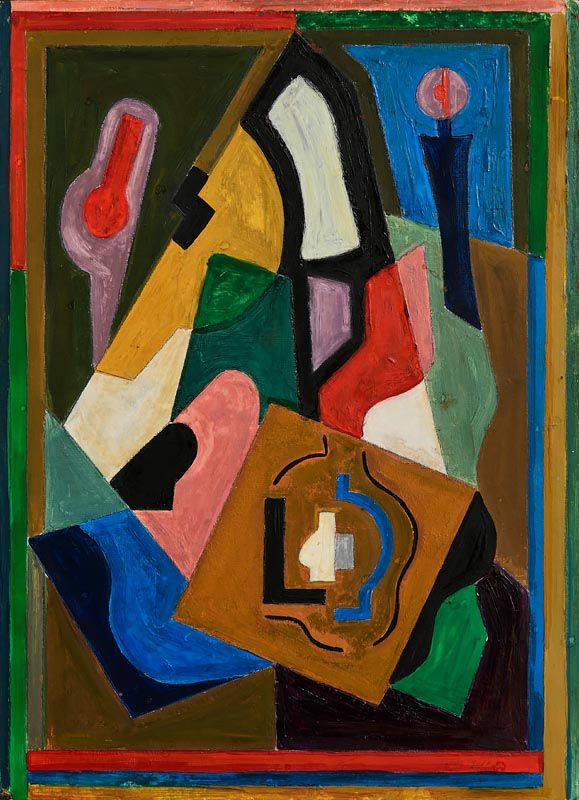
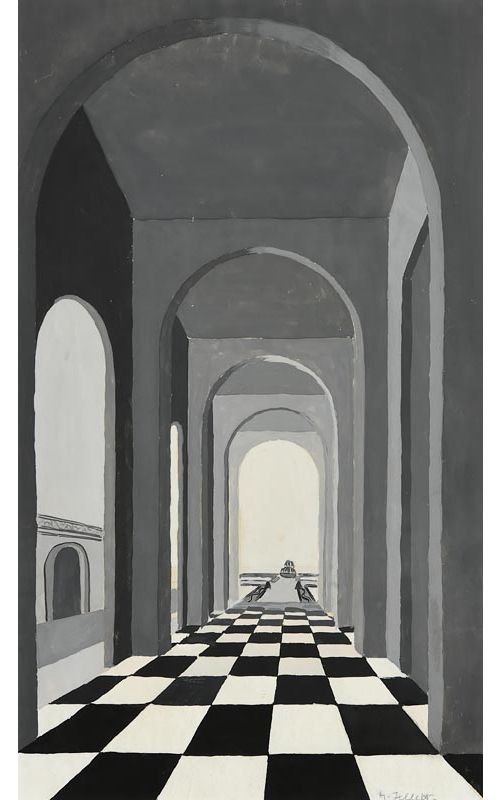


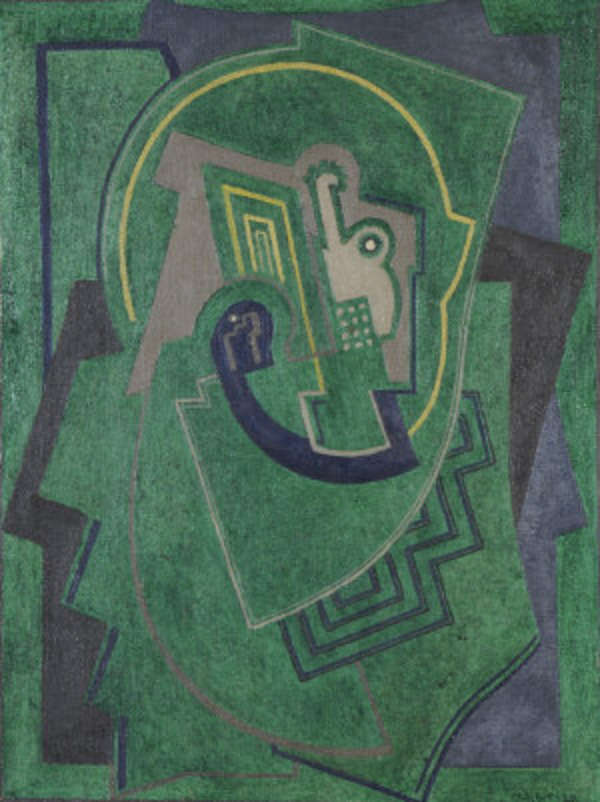

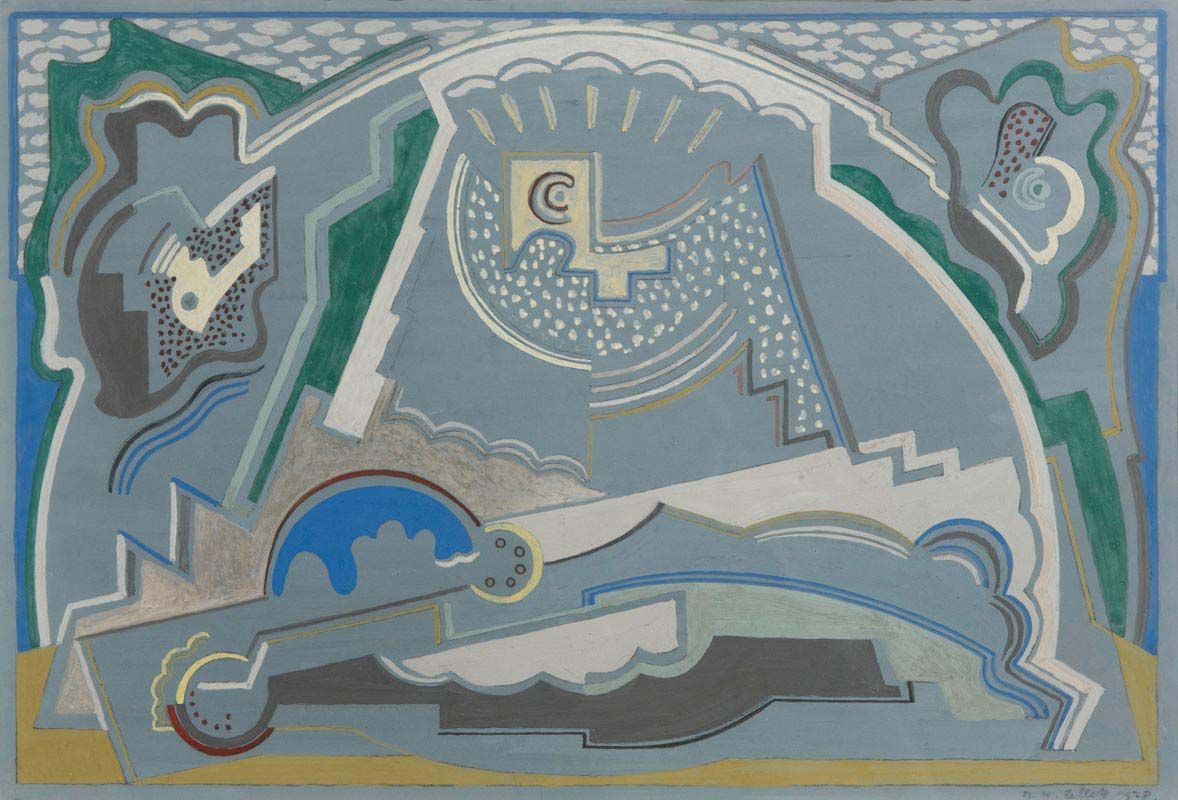

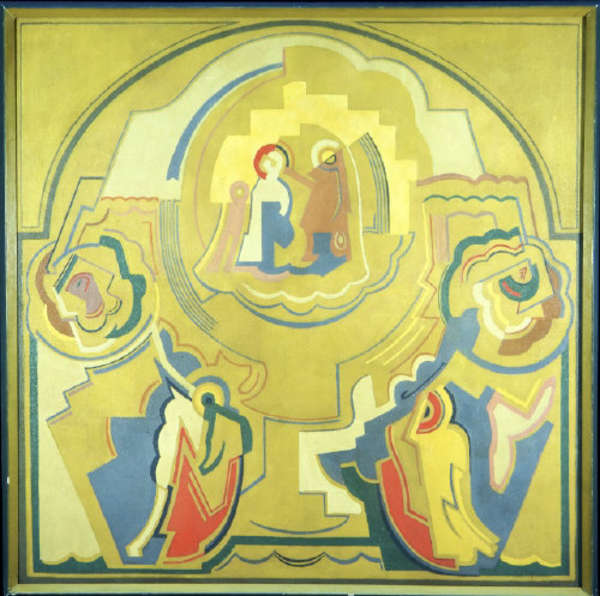


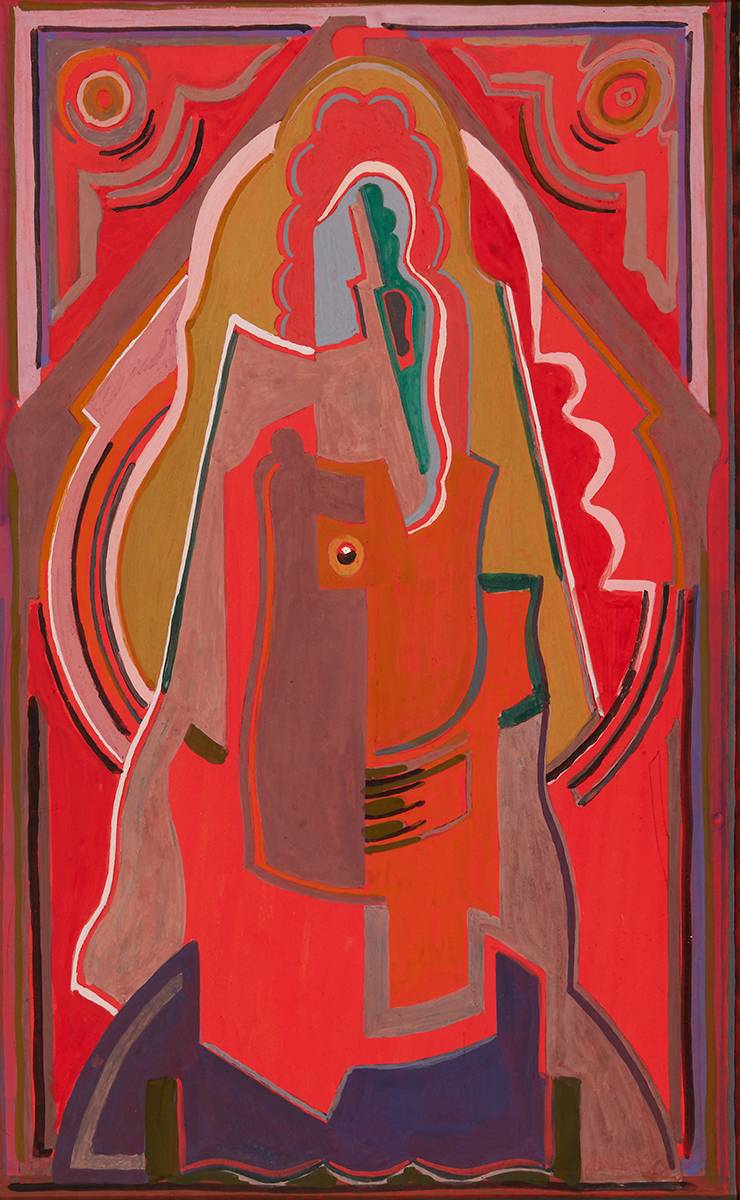

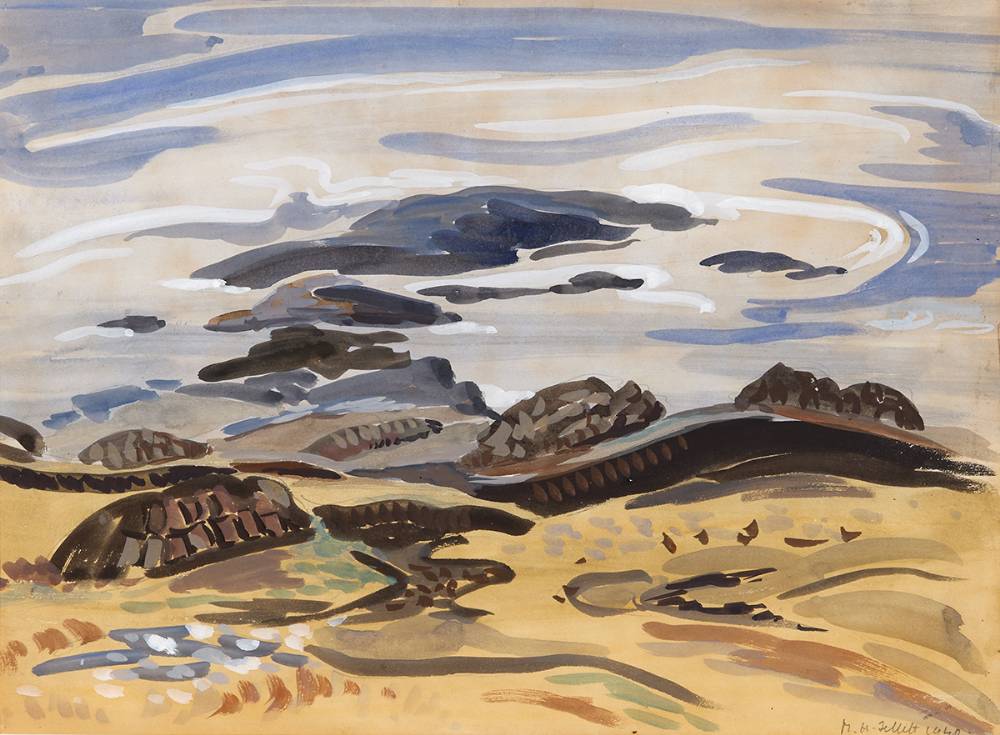
Testen Sie LotSearch und seine Premium-Features 7 Tage - ohne Kosten!
Lassen Sie sich automatisch über neue Objekte in kommenden Auktionen benachrichtigen.
Suchauftrag anlegen